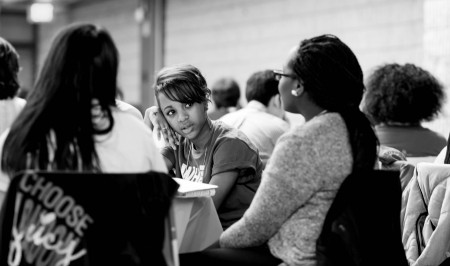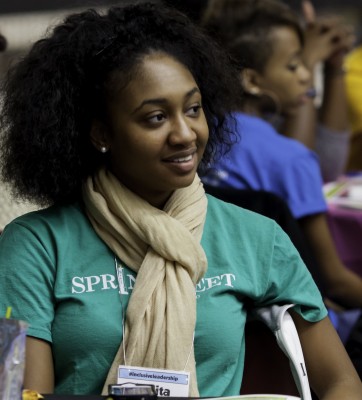On March 2, Mason’s LEAD Office hosted the Mason Leadership Institute. Held once a semester, the Institute is dedicated to educating Mason’s future leaders.
This semester, the Institute focused on the subject of diversity and inclusion. How, as a leader, does one identify internalized biases, and how does that compromise leadership ability? All these questions, and more, were answered by Dr. Shakti Butler.
Butler, a true renaissance woman, is African American with a mixed Arawak Indian and Russian-Jewish heritage. Filmmaker and founder of World Trust Educational System, Butler has made it her mission to inform others of their responsibility to each other as humans.
“We need to understand that if we want to have a world that thrives, we need to understand how we’re disconnected from each other,” Butler said.
The day’s activities primarily revolved around viewing and discussing Butler’s newest documentary, “Cracking the Codes,” a stirring collection of stories that explores both the personal and institutional effects of structural racism. Chimes were played regularly throughout the film, signaling the viewers to turn inward toward their tables and discuss the sensitive topics covered in the film.
The film was separated into three sections, the first focusing on the social determinants of racial inequity: history, identity and culture. These determinants, according to Butler’s diagram of the System of Racial Inequity, serve to distract people from addressing the subtly racist policies woven into the fabric of modern-day law and practice.
The first section was headed by the story of an artist who attempted to depict an unconventional portrait of our founding fathers. This re-imagining of Gilbert Stuart’s masterpiece was to remind those who saw the work that America’s past is studded with racial inequity, and it has left its scars. The second section described the internal components of structural racism—the bias, privilege and internalized racism of modern day Americans.
“Before, I thought I had complete control over my judgments of others,” said Mason freshman Carly Lombardi. “But internal bias is subconscious. It’s been ingrained in the back of our brains by the media.”
The third and final section delved into the interpersonal, institutional and structural components of racial inequity. Butler asked the audience to describe how they would construct a school with the exclusive purpose of eliminating racial inequity among its students. The task was ultimately impossible, Butler explained, because the student body of the school is determined by the surrounding community, and the surrounding community, in turn, is shaped by policies aimed to keep people of color in the slums.
The film ended on a high note, with a humorous account by one of Butler’s good friends, who was able to persuade a father to make a vow to make sure his kids would be educated on racial inequity, a vow to foster tolerance and racial equality with the growth of America’s youth.
“Because you are all leaders, there is something at least about being visible to yourself and, then, to be able to understand what’s driving your behavior so that you can use it to model for other people the authenticity of who you are,” Butler said.








Comments